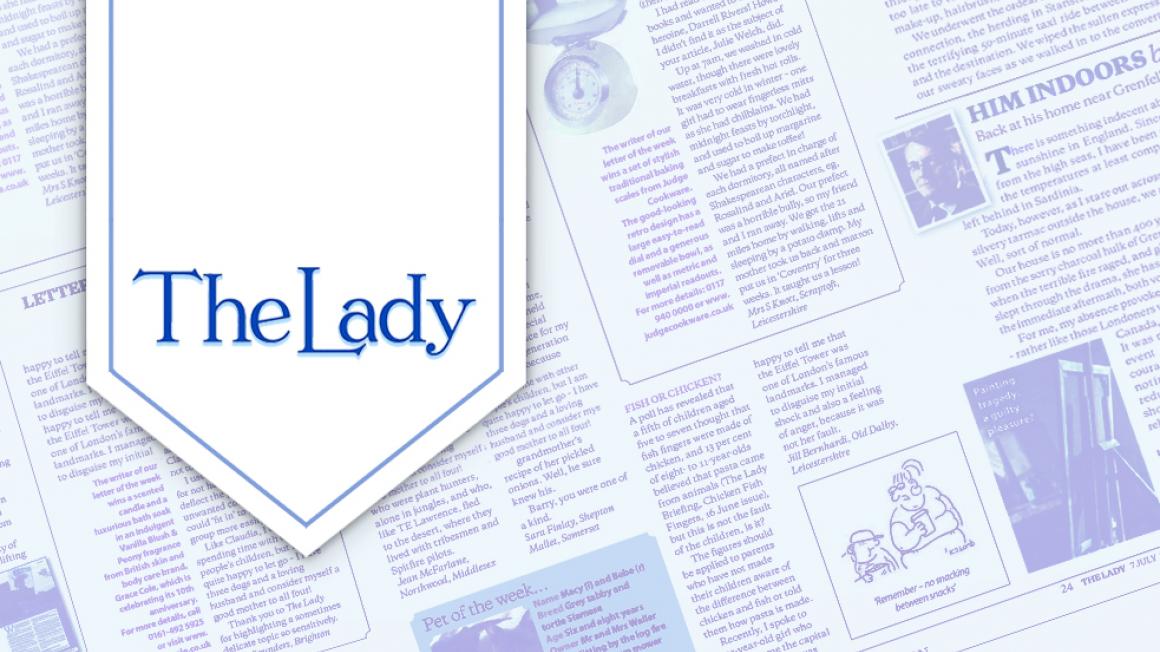Book Reviews: 26 April
OUT NOW
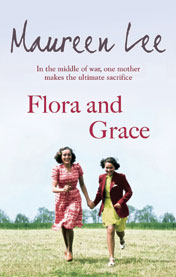 FLORA AND GRACE by Maureen Lee (Orion, £9.99; offer price, £9.49)
FLORA AND GRACE by Maureen Lee (Orion, £9.99; offer price, £9.49)It’s spring 1944 in Switzerland and teenage Flora, becalmed in the Alps by war, suddenly finds herself at the centre of the action. A cattle train rumbles through a station and an unseen woman thrusts a bundle of rags through a gap in one of the trucks into Flora’s arms. ‘Take him,’ Flora hears. ‘His name is Simon.’
It’s a cracking start to a story, and Maureen Lee doesn’t let you down with this tale of wartime sacrifice, tangled lives, love and redemption as both Flora and the baby Simon grow up and try to make sense of their world.
Lola Sinclair
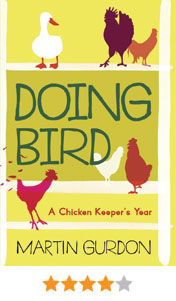 DOING BIRD by Martin Gurdon (Constable, £8.99; offer price, £8.54)
DOING BIRD by Martin Gurdon (Constable, £8.99; offer price, £8.54)In 1997, Martin Gurdon started keeping chickens, and he’s now written a book about the experience. By the time you’ve turned the first two pages – during which he has fallen into a snowdrift, had his hand frozen to the handle of a chicken-drinker and been pecked on the thumb by a hen called Slasher – you can see why the siren call of the safe indoors might have beckoned.
But chicken keepers are not wimps. By page 121, Gurdon’s wife has decided it would be nice to add Bombay and Crispy, a pair of Indian runner ducks, to the equation, and Gurdon reluctantly agrees. What happens when an established flock of chickens meets two ‘daft, ungainly and demented’ ducks? Enjoyable mayhem, deftly described here. If you keep chickens, you’ll identify with the author every step of the way; if you don’t, this will serve as a potent warning against ever giving in to the urge.
Buchan Hamilton
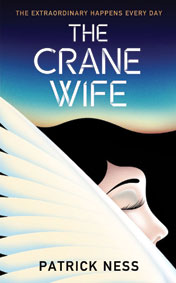 THE CRANE WIFE by Patrick Ness (Canongate, £14.99; offer price, £12.99)
THE CRANE WIFE by Patrick Ness (Canongate, £14.99; offer price, £12.99)Patrick Ness’s unsettling new novel combines magic realism with acute observations on the way in which the most unlikely people thrive in the most uncongenial of circumstances. George, who doesn’t ‘seem’ American, has fetched up in London. Amicably divorced and a laid-back artist manqué, he haphazardly runs a shop and is sliding into introversion. His equally chaotic daughter, single parent Amanda, is large, truculent and socially inept, her barely concealed rage unhelpful in every relationship.
George’s dream-like encounter with an injured crane at the start of the novel begins his seismic life change. He meets Kumiko, a mysterious ethereal woman, who shows and tells him in a series of folkloric tableaux, the story of a flying creature and a volcano suffused with ‘angry joy’. Her deranged yet exquisite creations of unlikely couplings enchant the fickle art world, but George, careless of what he wishes for, wants to possess her completely.
Could she be ‘born in a breath of cloud’, given the strange effect she has on all who encounter her? Patrick Ness’s effortless prose enchants as the doomed love affair unfolds to reveal the inevitable, tear-jerking confl agration at the novel’s end.
Sarah Crowden
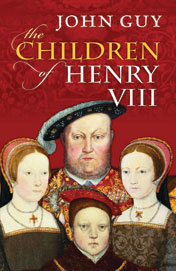 THE CHILDREN OF HENRY VIII by John Guy (Oxford, £16.99; offer price, £13.99)
THE CHILDREN OF HENRY VIII by John Guy (Oxford, £16.99; offer price, £13.99)The stunning psychodrama that was the Tudor court is brilliantly evoked in John Guy’s little book (198 pages) about Henry VIII’s children. The perpetuation of his dynasty was Henry’s number one concern, leading him to marry six wives, become embroiled in a notorious divorce case and break with the Pope. Eventually, he was to father four living children and almost countless stillborns.
It was indeed a game of thrones, into which his surviving offspring – illegitimate Henry Fitzroy, Edward who died a teenager, Mary and Elizabeth – found themselves thrust, their childhoods marred by jealousy, sibling rivalry and hatred. Guy’s intriguing glimpses into the children’s education, upbringing and illnesses is balanced by the background conspiracies of court life and fate of the wives.
Theo Walden
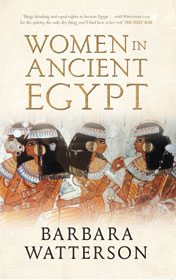 WOMEN IN ANCIENT EGYPT by Barbara Watterson (Amberley, £9.99; offer price, £9.49)
WOMEN IN ANCIENT EGYPT by Barbara Watterson (Amberley, £9.99; offer price, £9.49) What did women do in ancient Egypt? Loads, according to the Egyptologist Barbara Watterson, whose research has revealed a world in which women were accorded the same legal rights and had the same expectations of life after death as men. Otherwise their role was largely domestic. Appearance counted: a recipe for making the hair grow consisted of the leg of a female greyhound, one date stone, the hoof of a donkey, all ‘cooked in oil. Anoint well with it.’
One word of warning – the type in this book is minute.
LS
MUST READ
 Into the heart of the volcano
Into the heart of the volcano VESUVIUS: THE MOST FAMOUS VOLCANO IN THE WORLD by Gillian Darley (Profile Books, £8.99; offer price, £8.54)
Dormant for almost 70 years but still a potential threat to the thousands who live at its foot, Vesuvius has produced its own literature, imagery and scientific insights. There have been nearly 30 major eruptions since AD 79, when Pompeii and Herculaneum were destroyed within hours. Darley’s book leaves no stone unturned on its rocky landscape. From Spartacus’s slave rebellion to the last big eruption in 1944, when Allied forces assumed they were witnessing the detonation of a world-changing bomb, this is Classical writing with class.
BOOK OF THE WEEK
The rectory’s children The unlikeliest of places has bred a number of literary greats, says Hugh St Clair

THE WRY ROMANCE OF THE LITERARY RECTORY by Deborah Alun-Jones (Thames & Hudson, £18.95; offer price, £17.05)
The rectory has been a most extraordinary breeding ground of literary achievement in this country. Jane Austen, the Brontës, Tennyson, Noel Streatfeild and Edmund de Waal were all children of the clergy. So a book investigating how the work of literary figures who were either born in, or – like Rupert Brooke and John Betjeman – lived in rectories, is bound to be fascinating.
The Indian author Vikram Seth went so far as to buy his own rectory – Bemerton, near Salisbury in Wiltshire, because it had been the home of his favourite 17th-century poet, George Herbert, who had lived there between 1593 and 1633. But rectories have not always been happy places for their inhabitants. Alfred Tennyson sought refuge in the attics to escape his violent father. The behaviour of George Clayton Tennyson, rector of Somersby, Bag Enderby and vicar of Grimsby, was extreme, but highly educated and intelligent clergymen were often frustrated misfits in rural parishes, being neither a social equal to the aristocracy nor to the local farmer, but residing instead in a kind of social no man’s land somewhere in between.
That went for their children, too. ‘One event resembles another, there is no event to mark its progress,’ sighed Charlotte Brontë about life at the uncomfortable Haworth.
Boredom and isolation forced Charlotte and her siblings to fall back on their own devices. Indeed, if Haworth had been a happier place, Jane Eyre, Cathy and Heathcliff might never have been brought to life. Likewise, vicarage child EF Benson, creator of Mapp and Lucia, produced a weekly magazine with his brothers in the attic of Lincoln Chancery, inspired by the towers and dungeons that surrounded them, while Rupert Brooke sensed spectral diners at Grantchester. Edmund de Waal, a later child of freezing-cold Lincoln Chancery, has said that years spent wandering round the cathedral strongly influenced his pottery.
Fascinating reading. But the only woman writer studied in depth is Dorothy L Sayers. What about Noel Streatfeild or Monica Edwards? I wish this book were fatter!
PAPERBACKS
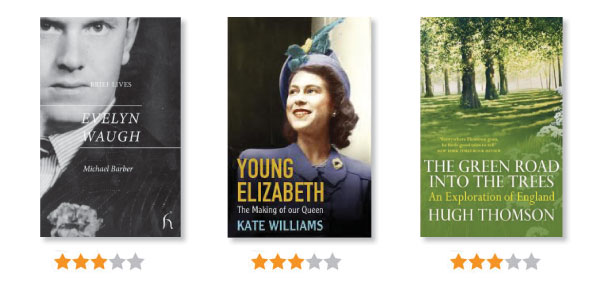
Christopher Sykes, Waugh’s biographer, moaned about the ‘terrible diffi culty’ of writing the life of a man ‘whose every action showed him to be a shit’. Barber demonstrates in this perceptive, brief life of one of our finest novelists, that Waugh, much loved by his friends, has become something of a legend, his work enjoying a starry renaissance.
BH
YOUNG ELIZABETH by Kate Williams (Phoenix, £8.99; offer price, £8.54)
A well-written account of the Queen’s early life, with facts on her sheltered upbringing, her often fiery relationship with Princess Margaret and her fi ght during her youth to lead as normal a life as possible.
LS
THE GREEN ROAD INTO THE TREES by Hugh Thomson (Windmill, £9.99; offer price, £9.49)
Travel writer Hugh Thomson’s usual territory is the landscapes of Peru, Mexico and the Himalayas. This 400-mile trek across the UK from Dorset to Norfolk, using paths made by the Celts, Saxons and Vikings, makes a journey as strange and foreign as his adventures abroad.
TW
ALSO PUBLISHED…
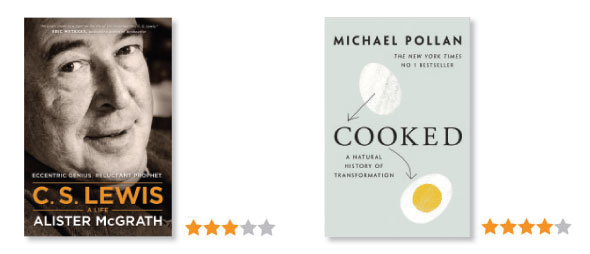
CS LEWIS: A LIFE by Alister McGrath (Hodder & Stoughton, £20; offer price, £15) A new biography of the man who invented Narnia. McGrath’s illuminating book has benefi ted from access to recently released archive material that throws new light on Lewis’s unconventional affair with the Irish divorcee Jane Moore, his life at Oxford and his conversion to Christianity.
COOKED by Michael Pollan (Allen Lane, £20; offer price, £16)
The dangers of processed food, which range from E. coli to mini doses of bute in your burgers, are many. How to avoid making yourself ill? Start cooking, says Michael Pollan, and benefit from the magical alchemy of making your own bread, cheese or hog roast. You’ll make new friends and rediscover family life. An erudite and irresistible thesis.
HEART OF THE MATTER
Love and its dilemmas Rebecca Maxted picks the best of the latest chick lit 
GOOD HUSBAND MATERIAL by Trisha Ashley (Harper Collins, £7.99; offer price, £7.59)
Romance novelist Tish and her husband James have bought an idyllic country cottage. She hopes it will put them on the path to domestic bliss, but he prefers the pub. Then her ex-boyfriend turned rock star Fergal Rocco rears his lovely head. Fast-paced and seriously witty, the plot offers one heck of a (expected, but still shocking) twist.
TANGLED LIVES by Hilary Boyd (Quercus, £7.99; offer price, £7.59)
Annie had a baby at 18 but gave him up for adoption. Now happily married, she has kept this from her three children, but is forced to reveal all when a letter arrives saying her son wants to meet her. Full of life-changing confessions, this is an honest observation of family dynamics, though Annie seems the architect of her own problems, making her hard to empathise with totally.
THE SWEETNESS OF FORGETTING by Kristin Harmel (Quercus, £7.99; offer price, £7.59)
Hope runs a bakery. Started by her French grandmother Rose, it is in fi nancial trouble, and Hope is struggling to cope with her recent divorce and unruly daughter. Rose has Alzheimer’s, and asks Hope to take a trip to Paris to learn what became of her family. Hope uncovers the truth about Rose and, in turn, her own history. Slow to start, this heartwarming tale of true love and faith picks up speed, helped by endearing characters whom, by the end, you’re really rooting for.


